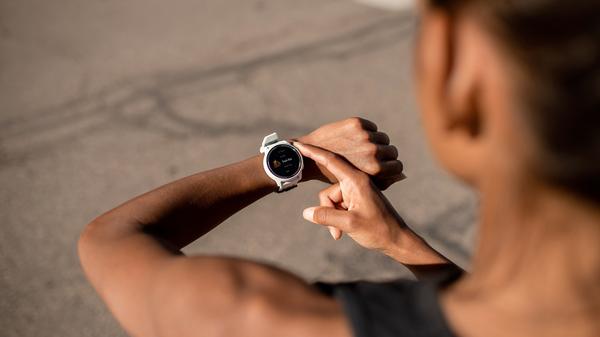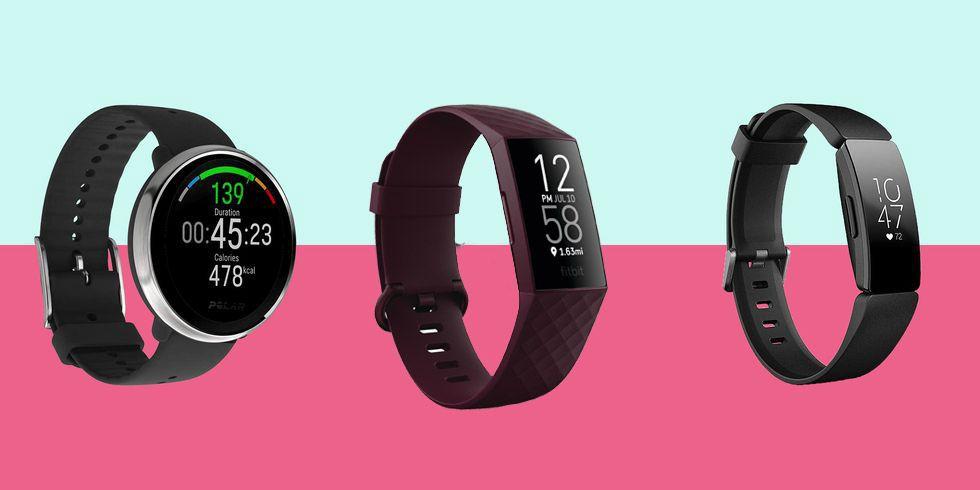
By cuterose
Nine of the best fitness trackers
The latest fitness trackers now come with powerful extras including built-in GPS tracking for outdoor navigation or ECG capability to record heartbeat and rhythm – with some even sending the results directly to your doctor. Here’s a round-up of the latest innovations to spur your spring motivation.
Best ultimate all-round multisport: Garmin Fenix 7
The brand’s latest multisport device has many uses: from sleep and activity tracking (steps, floors and calories) to advanced settings for training and navigation, to everyday phone notifications, payments and Spotify. The new touchscreen makes changing data fields within an activity much simpler, and the largest 7X version of the watch has a new integrated torch that’s really powerful. The optional integrated solar charging enhances an already impressive 11-day battery life, and the watch can be used in the water to depths of 100m. It’s also equipped with the best GPS accuracy available, plus the brand’s fourth-generation heart rate sensor (with Pulse Ox, which records oxygen saturation levels). One of the most impressive wearables on the market. From £599.99, garmin.com
Best for runners: Coros Pace 2
One of the most complete running-specific wearables for less than £200 that has all the top-end hardware needed for a fitness regime (from a heart rate monitor to advanced GPS and power meter), without the superfluous features that make them more expensive. At 29g, it’s phenomenally lightweight yet it has an impressive 30-hour battery life in full GPS mode (that stretches to 20 days if it’s used for heart rate, sleep and step tracking). It also provides advanced running analytics, so there’s a wealth of data for the user to dive into, and its nifty algorithm means track work automatically snaps to the nearest 400m. £179.99, coros.com
Best for aspiring athletes: Whoop 4.0
This simple, comfortable wristband monitors heart rate, skin temperature, respiration rate and blood oxygen levels. The tech is subscription-based (you sign up for a six-month minimum term and the strap comes free). It comes to life via the app, where the data is categorised into sleep, recovery and strain. The metrics are particularly useful for aspiring athletes training multiple times a week, suggesting each day’s optimum level of strain and recovery to optimise fitness gains based on historical data, which can be used to view longer-term trends when worn over successive months. It’s an insightful piece of kit that will work best when paired with other training devices such as a running watch or cycling computer. From £30 a month, whoop.com

Best for medically advanced sensors: Withings ScanWatch
This might look and feel like an elegant Swiss watch but is one of the most medically advanced wearables on the market. Its sensors (ECG, PPG and SpO2) are clinically approved, making it a top choice for sleep apnoea and atrial fibrillation patients as well as those with overnight breathing disturbances. It’s also easily controlled via the digital crown – you simply turn and press to scroll through the small PMOLED screen to view steps, phone notifications, or start an ECG scan. It has great battery life (forgoing a full size and colour digital display, it runs for 30 days), but as it lacks integrated GPS (the watch links to a phone to track runs and other features), this is not a good choice for the sports-focused user. From £249.95, withings.com
Best for activity tracking: Fitbit Charge 5
Simplicity is key to Fitbit’s latest and most advanced fitness tracker. The AMOLED display is bright and colourful with a nicely designed default home screen, and features are easily activated via gestures on the touchscreen. The built-in GPS accurately tracks runs or walks without the need for a phone, and will also monitor distance in a pool if swimming is part of your regime. Features such as a heart rate monitor, blood oxygen, skin temperature and ECG offer a holistic view of wellness metrics from the nicely laid out Fitbit app – although the most interesting, personalised insights are only available on the brand’s Premium subscription (£7.99 a month), which is free for the first six months. £169.99, fitbit.com
Best for triathletes: Wahoo Elemnt Rival GPS Smartwatch
Wahoo is best known for its GPS cycling computers – this is the brand’s first smartwatch. It’s aimed squarely at triathletes, but is also great for anyone with a focus on swimming, cycling or running. When it comes to stringing the three disciplines together, it has touchless transitioning, meaning you won’t need to interact with the watch when competing. Also, when you hop onto your bike, the live stats collected by the watch are displayed on the bike computer – assuming it’s also a Wahoo. Some of the specifications are slightly lacking when compared to other recent releases. For instance, the watch utilises GPS and GLONASS (the Russian-based satellite navigation system) – whereas many others now target multiple systems to ensure a speedier lock-on and improved accuracy. That said, the scratch-resistant lens, generous 24-hour battery life in GPS mode and easy-to-read colour screen is more than up to par. £299.99, wahoofitness.com
Best for workouts: Polar Ignite 2
A stylish watch that’s primarily aimed at tracking workouts, activity and sleep – but with accurate GPS, as well as one of the best heart-rate sensors going, it’s wholly capable for wider fitness and running use. The device tracks all day activity and sleep, stress monitoring and relaxation exercises, so it’s pretty holistic, with easy navigation – there’s just one button that works in tandem with the touchscreen. At 35g, it’s also lightweight, for comfort. £199.50, polar.com
Best entry level adventure watch: Suunto 5 Peak
This is the multisport for anyone wanting reliable and very capable sports tracking with navigational and adventure use, without the need for higher-end features. It weighs just 39g, and comes with interchangeable straps for customisation. The backlit mode lacks some brightness, but is perhaps worth the compromise given that the watch is fairly affordable. It has up to 100 hours’ battery life in full GPS mode, and lasts up to seven days in regular watch and tracking mode for steps and basic sleep analysis (via its integrated heart-rate monitor). It’s also great for navigational use, given its easy-to-follow breadcrumb trail for off-road bikes, hikes and runs. You can also create routes on third-party apps such as Komoot, which sync with Suunto’s app and download onto the watch. £259, suunto.com
Best for surfers and outdoor enthusiasts: Garmin Instinct 2 Solar Surf Edition
Affordable, funky (if you go for the Sunburst and Flame Red finishes) but robust, this watch is built to military standards for thermal and shock resistance and is water resistant to 100 metres. It now comes in two sizes, has more functionality, and this special edition incorporates surf (kite and windsurfing) features with metrics such as tide times, waves surfed and distance. Particularly great, the tie-in with Surfline Sessions has cameras at more than 600 beaches around the world, which means that when surfing activity is activated on your watch, you’ll be able to view clips of the waves you’ve hit once you’re out of the water. From £359.99, garmin.com
Get alerts on Wellbeing and fitness when a new story is published
Copyright The Financial Times Limited 2022. All rights reserved.Reuse this content (opens in new window) CommentsJump to comments section








